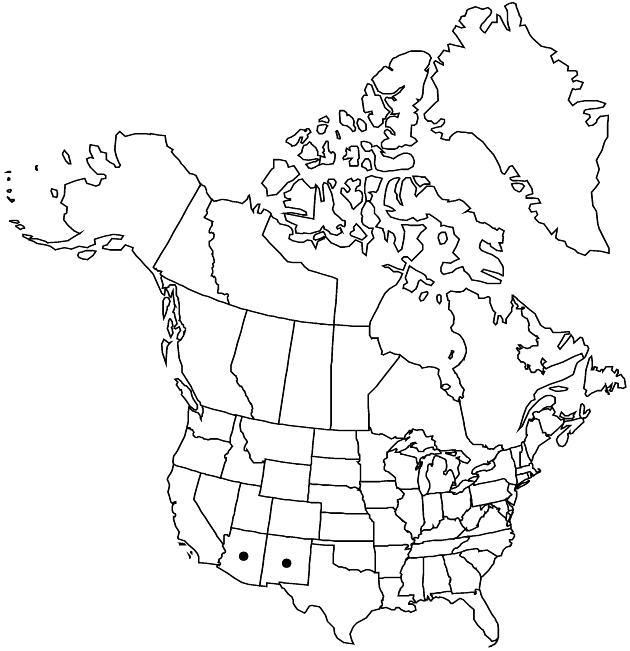Difference between revisions of "Cirsium arizonicum var. chellyense"
Sida 21: 209. 2004.
FNA>Volume Importer |
FNA>Volume Importer |
(No difference)
| |
Revision as of 18:35, 24 September 2019
Stems glabrous or villous to tomentose with septate trichomes. Leaf blades deeply 1–2× divided, (lobes many, narrow, closely spaced), faces glabrous or abaxial villous along midveins with septate trichomes; main marginal spines usually very slender, 5–12 mm; cauline bases usually decurrent as spiny wings to 30 mm. Involucres cylindric to narrowly ovoid. Phyllary spines slender to ± stout, 1–20 mm. Corollas usually reddish purple, 25–32 mm, tubes 7–11, throats 4–7.5 mm, lobes 11–16 mm; style tips 2.5–3.5 mm. 2n = 34 (as C. chuskaense).
Phenology: Flowering summer (Jun–Sep).
Habitat: Desert scrub, grasslands, pine-oak-juniper woodlands, ponderosa pine forests
Elevation: 1600–2800 m
Discussion
Of conservation concern.
R. J. Moore and C. Frankton (1974b) recognized three narrowly defined new species in the Cirsium arizonicum complex, all from a small area in the Defiance Plateau and Chuska Mountains in northeastern Arizona and northwestern New Mexico. The characters used to differentiate these taxa break down when additional specimens are examined, and they are all combined here as a single variety of C. arizonicum.
Selected References
None.
